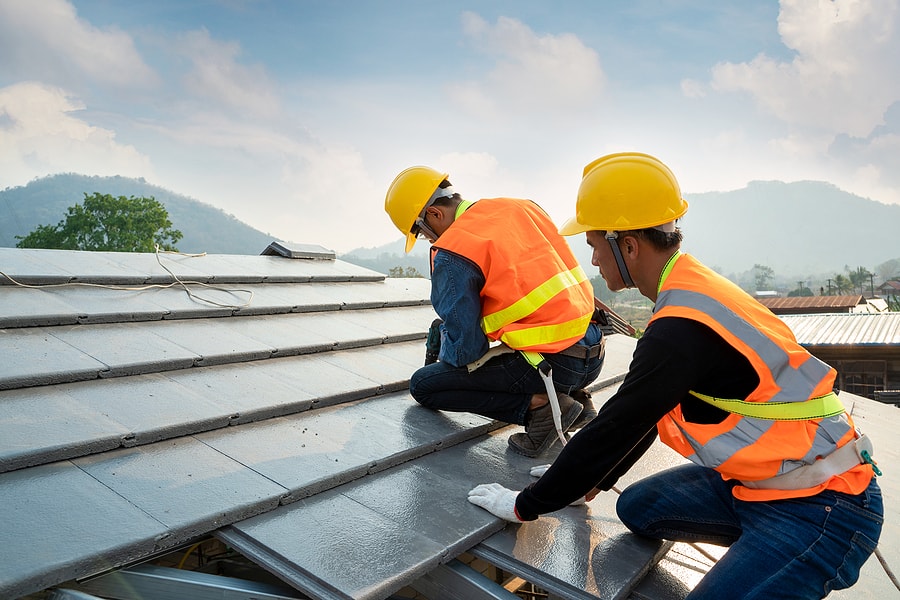Caring for your roof is a the most vital elements of homeownership that often is overlooked. Many homeowners overlook the significance of regular roof maintenance practices and the considerable benefits they can provide. A well-maintained roof not just boosts the overall aesthetic of your home but also extends its durability, helping you avoid expensive repairs or premature replacement. With routine inspections and swift interventions, you can catch issues before they grow, ensuring that your roof remains a strong shield against the weather.

Recognizing when it’s time for a new roof or knowing how to address common roofing problems is crucial for every homeowner. From recognizing signs that indicate your roof needs attention to deciding between a DIY solution and hiring a professional, being knowledgeable can save you both time and money. As we discuss the benefits of regular roof maintenance, we will also touch on various topics, including the longevity of various roofing materials, the importance of consistent inspections, and how to select the appropriate roofing contractor for your needs. By staying vigilant with your roof care, you not only protect your investment but also enhance the comfort and effectiveness of your home.
Essential Roof Care Practices
Regular roof maintenance is crucial for increasing the lifespan of your structure and avoiding expensive repairs down the road. One of the most effective approaches is to schedule bi-annual inspections. In these inspections, a qualified roofer can detect any potential issues such as loose shingles, fractures, or evidence of damage. Spotting these problems early enables swift repairs and can lessen the risk of further damage resulting from water intrusion or compromised structures.
Another key practice is to confirm that gutters and downspouts are free of obstructions. Blocked gutters can lead to water pooling on the roof, raising the chances of leaks and water damage. Homeowners should make it a goal to maintain their gutters at least a minimum of two a year, particularly before winter and after strong storms. Additionally, pruning overhanging branches can prevent roof damage caused by branches and debris, as well as lower the risk of mold growth from shade.
Ensuring proper attic ventilation is also vital for the lifespan of your roofing elements. Inadequate ventilation can trap heat and moisture in the attic, leading to issues such as ice dams in winter and damage of roofing materials. Making sure that vents are not blocked and adding exhaust fans if required can help manage temperature and humidity levels, leading to a better roof and ultimately saving homeowners from costly repairs and roof upgrade.
Indicators That Indicate It is The Time to Consider a Roof Replacement
As your roofing gets older, specific indicators will appear which signal it may be the time to consider a renewal. One of the most obvious signs is the presence of substantial leakages or water stains on your ceilings and walls. If important source notice consistent dripping during rainy weather or water spots accumulating, it implies that your roof is no more effectively protecting your home from leakage. Ignoring these problems can lead to more serious damage to the structure and costly repairs down the line.
Another indicator to watch for is curling, missing, or drooping shingles. If your shingles appears distorted or if several shingles are missing from your roof, it jeopardizes its ability to shield your home from the environment. Additionally, if you can notice daylight through the boards of your attic, it shows that your roof may have substantial damage that requires urgent attention. A thorough visual inspection can assist property owners identify these issues before they worsen.
Lastly, take note of the general age of your roof. Most roofing materials have a limited lifespan; for example, asphalt shingles typically last approximately 20 to 25 years, while metal roofs may last 40 years or more. If discover this info here is near or has surpassed its expected lifespan, it is prudent to seek advice from a roof professional for an evaluation. Investing in a renewal before major issues arise can prevent property owners from extensive damage and increased costs in the long run.
Grasping Rooftop Materials and Their Lifespans
As choosing a roofing material, it's important to take into account both durability and longevity. Common types such as asphalt shingles generally last about 15-30 years, contingent upon the grade and installation. Steel roofing, famous for its durability, can endure spanning 40 to 70 years, making it a popular choice for homeowners seeking a lasting investment. Tile roofs, while initially more expensive, can also provide excellent longevity, often exceeding 50 years with appropriate maintenance.
The endurance of a rooftop material is influenced by several factors, including the climate, maintenance frequency, and setup practices. As an example, roofs in wet or coastal areas may undergo more rapid deterioration due to humidity and salt exposure. Understanding these influences helps homeowners make knowledgeable decisions about types and necessary care practices to increase the life of their roofing.
Property owners should also take into account the advancements in rooftop technologies and green choices, such as green roofing or solar roofing, which not only offer lifespan but also eco-friendliness benefits. Understanding how long various rooftop types last can aid in organizing budget allocations for substitution and maintenance, ensuring the rooftop remains a defensive barrier for the house for years to come.
